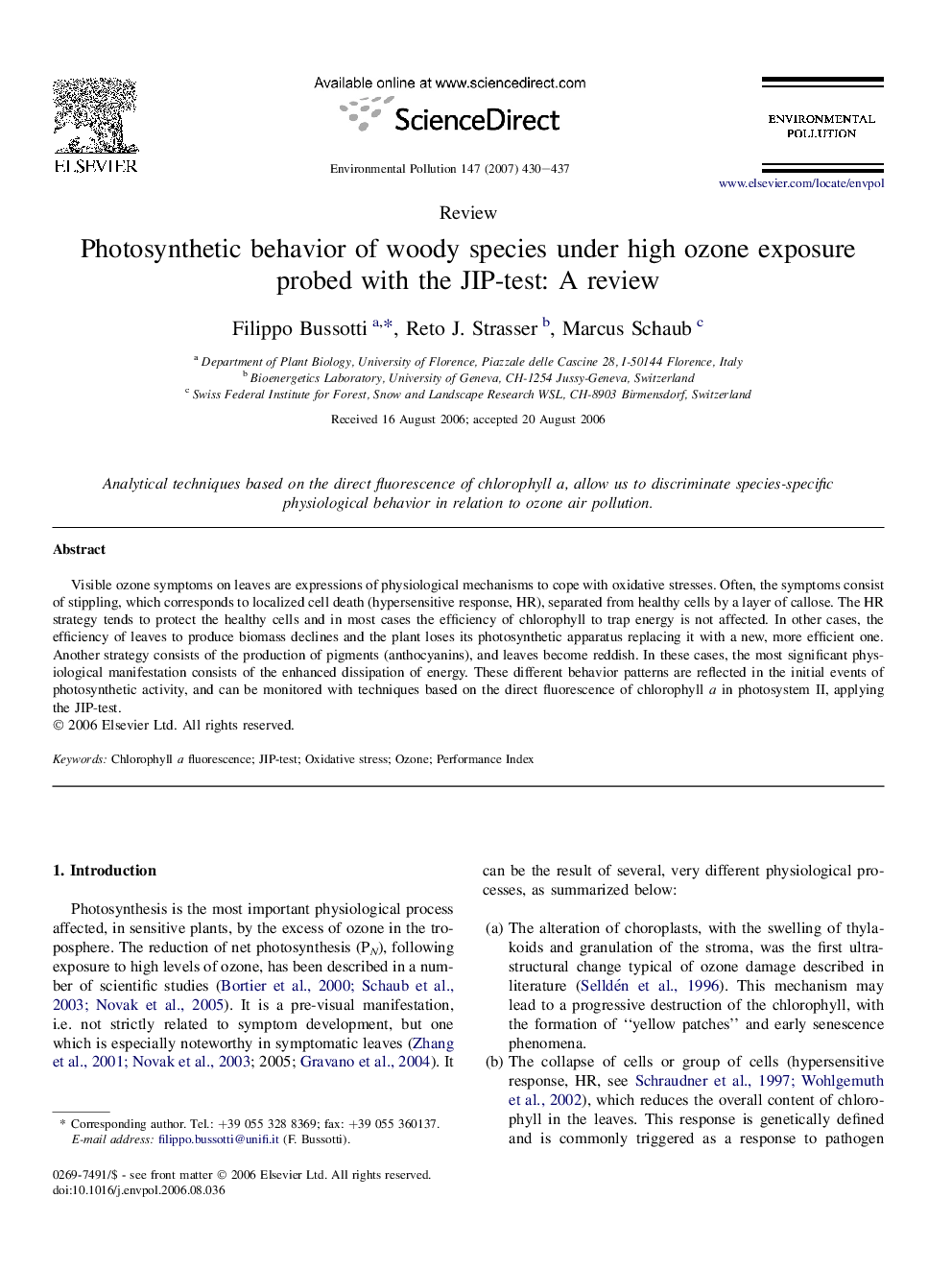| Article ID | Journal | Published Year | Pages | File Type |
|---|---|---|---|---|
| 4426789 | Environmental Pollution | 2007 | 8 Pages |
Visible ozone symptoms on leaves are expressions of physiological mechanisms to cope with oxidative stresses. Often, the symptoms consist of stippling, which corresponds to localized cell death (hypersensitive response, HR), separated from healthy cells by a layer of callose. The HR strategy tends to protect the healthy cells and in most cases the efficiency of chlorophyll to trap energy is not affected. In other cases, the efficiency of leaves to produce biomass declines and the plant loses its photosynthetic apparatus replacing it with a new, more efficient one. Another strategy consists of the production of pigments (anthocyanins), and leaves become reddish. In these cases, the most significant physiological manifestation consists of the enhanced dissipation of energy. These different behavior patterns are reflected in the initial events of photosynthetic activity, and can be monitored with techniques based on the direct fluorescence of chlorophyll a in photosystem II, applying the JIP-test.
